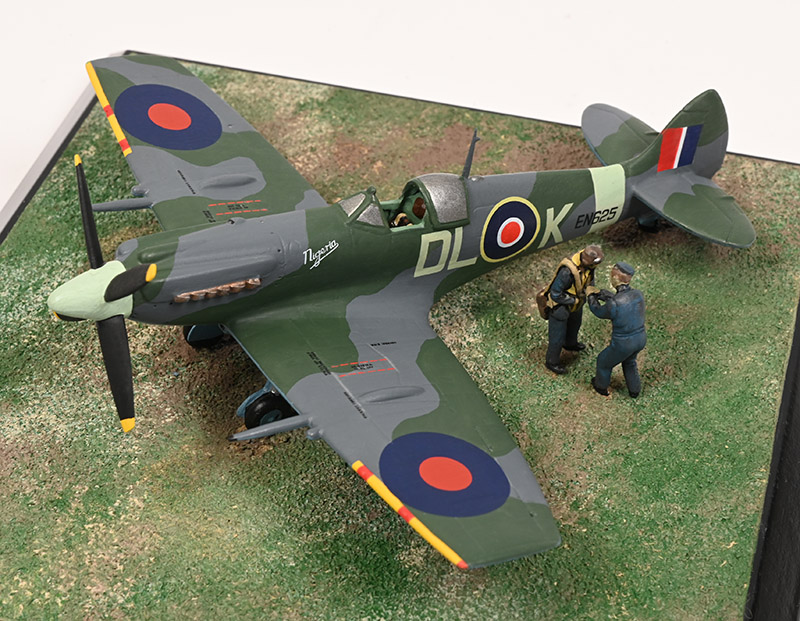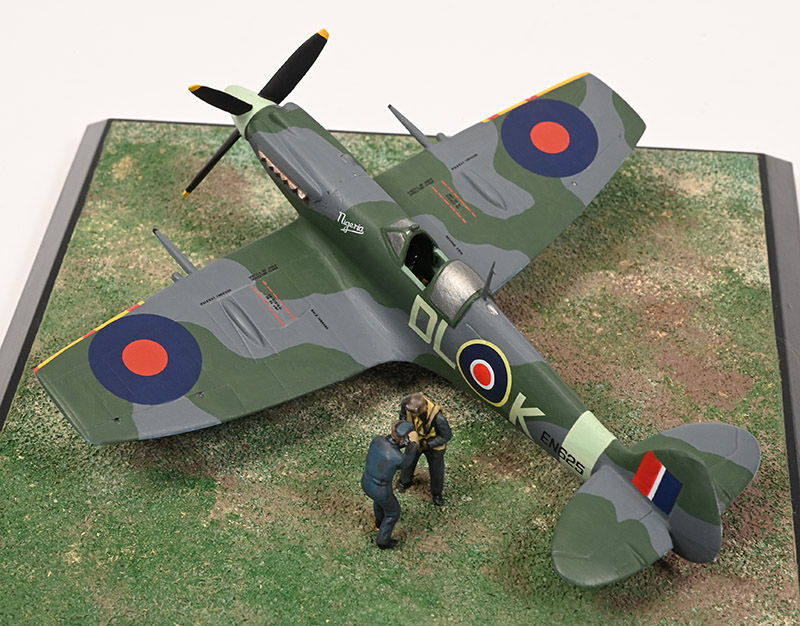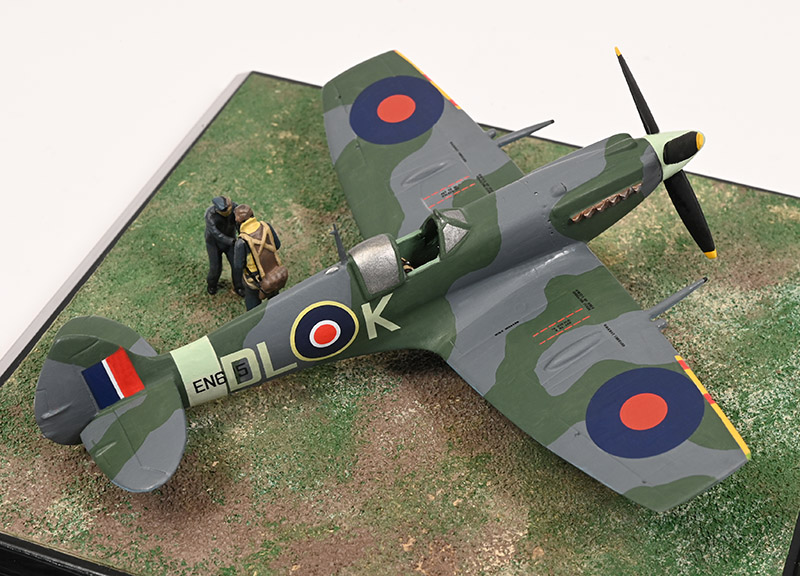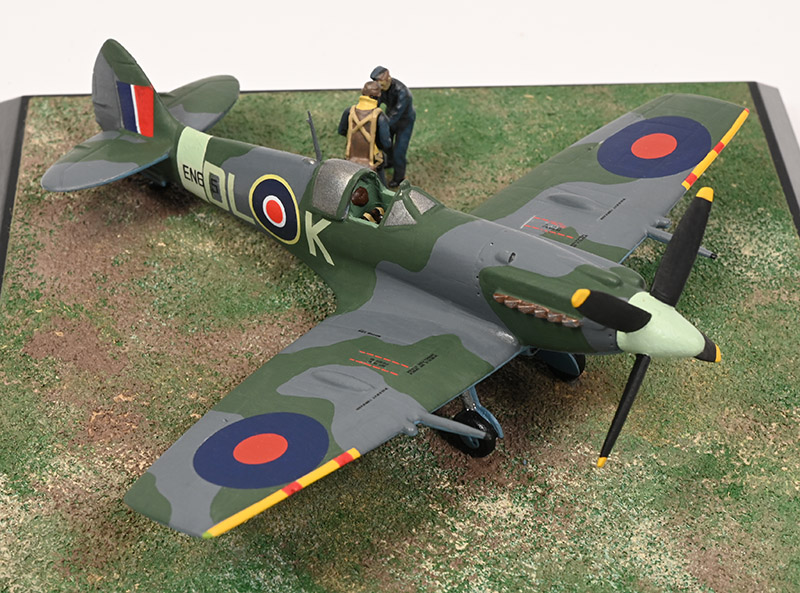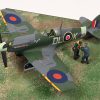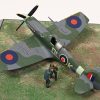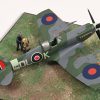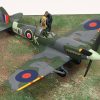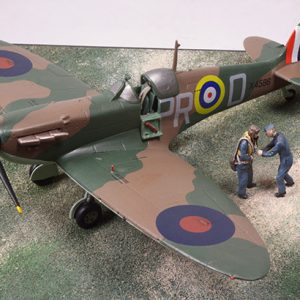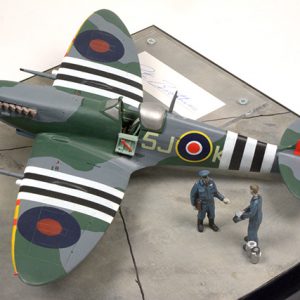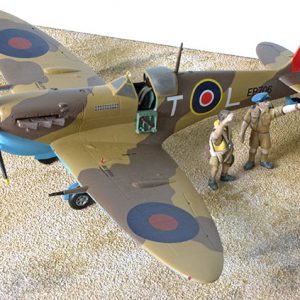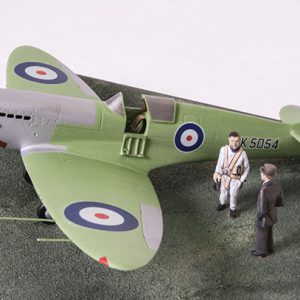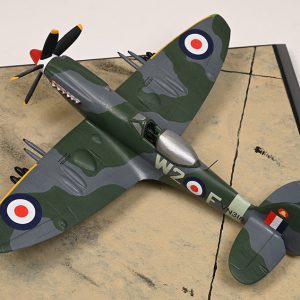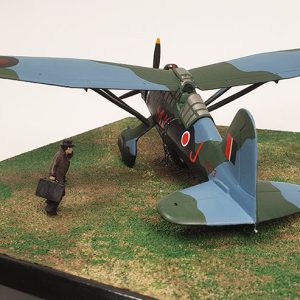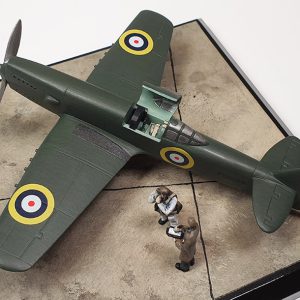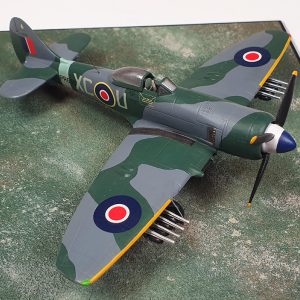Supermarine Spitfire Mk XII EN625 DL-K
91 Squadron, Squadron Leader Raymond Harries, Hawkinge, England, May 1943.
The Supermarine Spitfire Mk XII was the first Griffon engined Spitfire to enter squadron service. The first Spitfire to be fitted with the Rolls Royce Griffon engine had been the Spitfire Mk IV, which only reached the prototype stage (DP845). The Mk IV was in fact a Mk I airframe modified to take the Griffon engine and was later redesignated to the Spitfire Mk XX. While the Spitfire Mk V was successful against the Messerschmitt Bf 109 F it was completely outclassed by the Focke Wulf Fw 190. In February 1942, it was decided that a successor had to be found quickly as the new Spitfire Mk IX was many months away from full production. An alternative had to be operational in 1943 to meet the Focke Wulf threat. The Spitfire Mk IV had paved the way for this alternative and development of the Spitfire Mk IV prototype (DP845) continued to become the prototype for the Spitfire Mk XII. Focke Wulf Fw 190s based in Normandy had been making ‘tip and run’ bombing raids on the South Coast of England, and this was precisely the menace that the Spitfire Mk XII was designed to counter. Armed with two Hispano 20mm cannon and four Browning 0.303″ machine guns, the Spitfire Mk XII was a good match for the Focke Wulf Fw 190s, The airframe’s clipped wings achieved excellent low level manoeuvrability. Only 100 Spitfire Mk XIIs were ever produced before the Mk IX entered full production. The Mk XII showed the way forward for the Spitfire and was a very important development. With the RAF taking the fight to the enemy and having to cross the Channel or the North Sea to do so, the Dark Earth tone of the camouflage stood out against the sea. In 1941 this was changed to a dark grey colour called Ocean Grey, a scheme of grey and dark green being equally good over land or sea. At the same time, the lower surfaces were painted a lighter shade of grey, called “Medium Sea Grey”.
91 Squadron’s primary duty, as recorded in their Operations Record Book (ORB) was to “protect the coastal towns against tip and run raiders”. The squadron downed five of these tip and run raiders on 25th May 1943. Raymond Harris, flying Spitfire Mk XII EN625, made the squadron’s first two kills of the day. Harries and his fellow pilots intercepted the Fw 190s from SKG 10. He commented “I was leading Blue Section on a defensive patrol. I had just returned to base, with my No 2, had just landed when the scramble signal was given from the watch office. We both immediately took off again, and saw enemy aircraft approaching Folkestone. I sighted one lone Fw 190 at sea level returning to France. I came in from his starboard side, delivering a three-second burst at 250 yards. The enemy aircraft hit the sea tail first, split in two, and sank immediately.” The Fw 190 was thought to be Fw 190 A-5 Werknummer W.Nr. 2511 of 6./SKG 10, flown by Oberleutnant Josef Keller. “I then spotted another Fw 190 to starboard. I flew straight over the top of it in order to identify it in the failing light. The enemy aircraft pulled his nose up and gave me a quick squirt. I pulled straight up to about 1000ft, and turning to port, dived right onto his tail, opening fire from 300 yards and closing to 150 yards. I fired a four-second burst, seeing strikes and flames all over the enemy aircraft. The enemy aircraft gradually lost height, with smoke and flames coming from it, skimmed for some distance along the surface of the water and then sank. I orbited around taking cine gun snaps of the oil patch and pieces of wreckage that were visible.” This was a memorable day with 91 Squadron claiming five Fw 190s without losses.
With the new Luftwaffe low level intruder units at full strength, May 1943 saw a sharp increase in massed tip and run attacks. Twelve specific targets were attacked in one seven-day period. On two days, two attacks were made simultaneously in an attempt to split the RAF’s fighter defences, all the attacks occurring either early in the morning, lunchtime or late in the evening, maximising their irritation to the civilian population. Night time missions were also undertaken. Despite the devastating success of many of these attacks, and only a small number of aircraft losses, the Luftwaffe was seemingly unaware of the results it was achieving in May 1943. German propaganda broadcasts, usually boastful of such attacks, preferred to play down the successes of the “fast bombers”. Indeed, far from building on its success, by the end of June the Luftwaffe’s tip and run campaign suddenly ended.
Raymond Harries was the most successful pilot to fly the Rolls-Royce Griffon powered Supermarine Spitfire, scoring 11 kills in the type. He survived the war, only to die on 14th May 1950 while flying a 92 Squadron Gloster Meteor F4 when it ran out of fuel and crashed near Sheffield, England.


